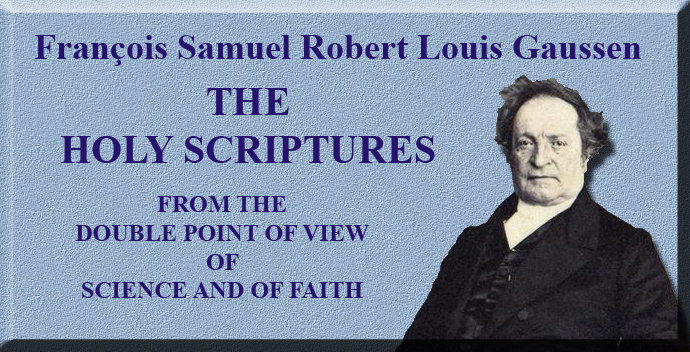
The Holy Scriptures
From the Double Point of View of Science and of Faith
By François Samuel Robert Louis Gaussen
Part First - Canonicity of all Books of the New Testament
Book 1 - Chapter 3
|
THE CHURCH, FROM THE COMMENCEMENT, REGARDED. THE COLLECTION OF SCRIPTURES AS A HARMONIC WHOLE. 11. THE primitive Church received the books of the New Testament one after another; but regarded the collection, in its gradual formation, as one distinct whole, having God for its author, and the manifestation of Jesus Christ as its sole purpose, in the same way that the ancient Israel of God regarded the code of the Old Testament, in its gradual formation, as one harmonic whole, having God for its author, and His plan of redeeming His elect as its sole object. 12. We shall give merely one or two illustrations of this at present, taken from the records of the first century, or of the beginning of the second. The author of the beautiful Epistle to Diognetus, a disciple, as he states, of the apostles, represents the Law and the Prophets, the Gospel and the Apostles, as acting in concert to bring grace and joy into the Church. “Thus,” says he, “the terror of the Law is proclaimed, the grace of the Prophets made known, the faith of the Gospels established, and the teaching of the Apostles maintained, and the grace of the Church leaps with joy.”1 Ignatius likewise, about the year 107, in one of his epistles, said to the Philadelphians (ch. v.): “Your prayers will obtain for me to be perfected in God, fleeing for refuge to the Gospel, as the flesh of Jesus, and to the apostles, as the Presbytery of the Church: We adhere also to the prophets, who themselves proclaimed the Gospel, hoped in Christ, waited for His coming in — the unity of Jesus Christ, and found salvation through faith in Him.”2 13. As the Canon of the New Testament is a collection of books, written at different times and in different places during the last half of the apostolic century, by eight inspired authors, it could only be completed gradually, and could only assume its entireness towards the end of the first century, or at the beginning of the century following.
|
|
 |
 |
|
1) Chap. xi. 1 Εἶτα φόβος νόμον ᾅδεται, καί προφητῶν χάρις γινώσκεται, καί ἐυαγγελίων πίστις ἱδρύεται, καί ἀποστόλων παράδοσις φυλάσσεται, καί ἐκκλησίας χάρις σκιρτᾷ.. 2) Προσφυγὼν τῷ Εὗαγγελῖῳ ὡς σαρκὶ Ἰησοῦ, καὶ τοῖς Ἀποστόλοις ὡς πρεσβυτερίῳ ἐκκλησίας. Καὶ τοὺς Προφήτης, &c. This epistle, however, is one of those which Mr Cureton has left out in his Syriac edition. See proposition 250.
|
|
-
Site Navigation
 Home
Home What's New
What's New Bible
Bible Photos
Photos Hiking
Hiking E-Books
E-Books Genealogy
Genealogy Profile
Free Plug-ins You May Need
Profile
Free Plug-ins You May Need
 Get Java
Get Java.png) Get Flash
Get Flash Get 7-Zip
Get 7-Zip Get Acrobat Reader
Get Acrobat Reader Get TheWORD
Get TheWORD